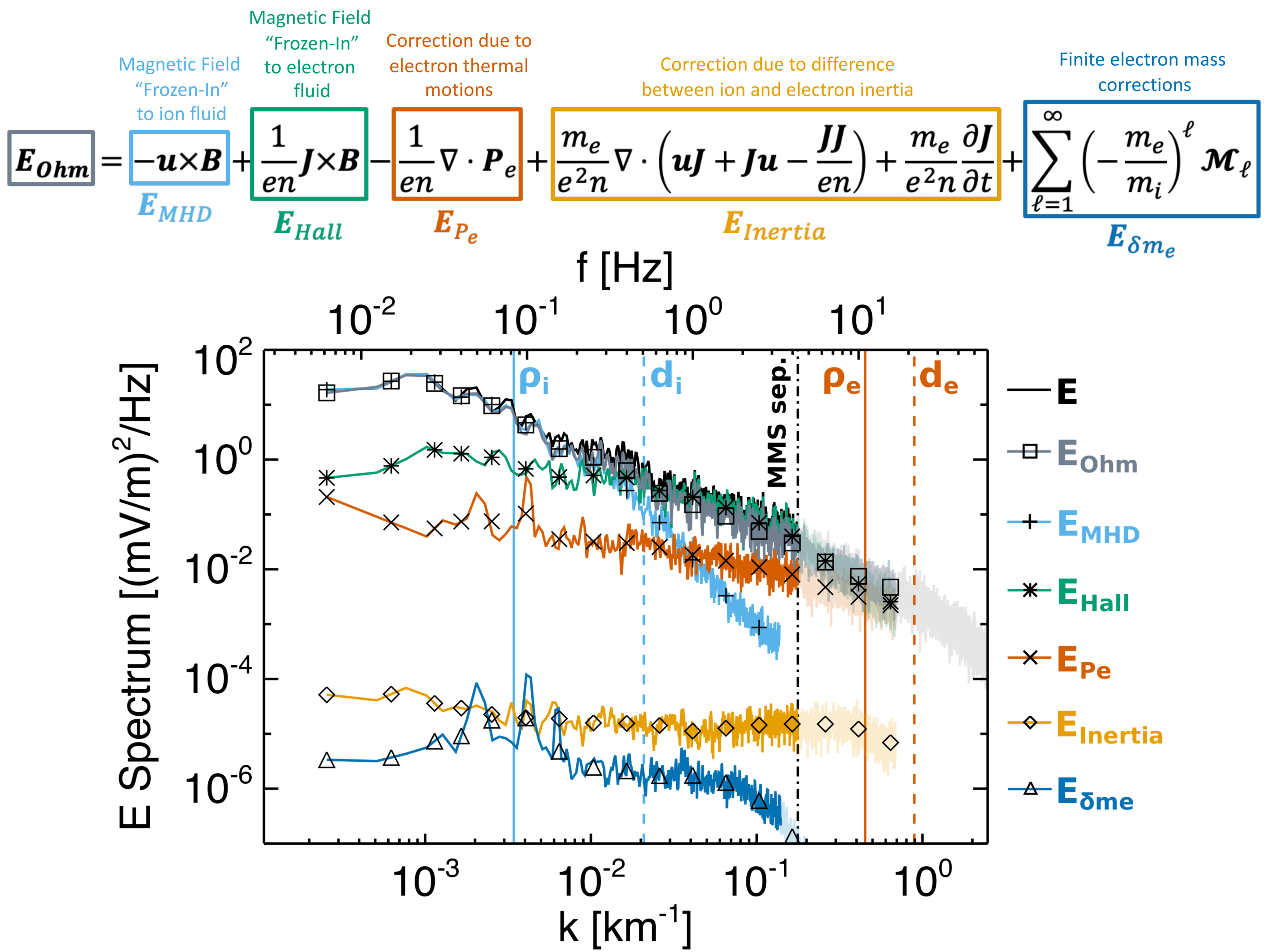MIST
Magnetosphere, Ionosphere and Solar-Terrestrial
Comparative Analysis of the Various Generalized Ohm’s Law Terms in Magnetosheath Turbulence as Observed by Magnetospheric Multiscale
By Julia E. Stawarz (Imperial College London)
Complex, highly nonlinear, turbulent dynamics play an important role in particle acceleration and plasma heating throughout the Universe by transferring energy from large-scale to small-scale fluctuations that can be more easily dissipated. Electric fields (E) in these plasmas are responsible for mediating energy exchange between the magnetic fields and particle motions and, therefore, can provide key insight into both the nonlinear dynamics of the turbulence and the processes responsible for dissipating the fluctuations. In the collisionless plasmas often found in space, E is described by generalized Ohm’s law, displayed in Fig. 1.
In Stawarz et al. (2021), we directly measure nearly all the terms in generalized Ohm’s law for several intervals in Earth’s magnetosheath and, for the first time, examine how Ohm’s law shapes the turbulent E at different length scales. Many terms in Ohm’s law, require the computation of small-scale gradients, and, therefore, the unique high-resolution, multi-spacecraft measurements from NASA’s Magnetospheric Multiscale mission were necessary to perform the study. As seen in Fig. 1, we find that, at scales larger than the proton inertial length, the observed E is given by the ideal magnetohydrodynamic term, while, at sub-proton scales, a combination of the Hall and electron pressure terms control E, as expected. Other terms, related to the difference between proton and electron inertia and the finite mass of electrons, remain small across the observable scales. Within the paper, we explore the interplay of the various terms in further detail by examining the correlation between the Hall and electron pressure terms, which provides insight into the types of sub-proton-scale structures formed, and by exploring the relative contribution of linear and nonlinear terms in Ohm’s law at different scales.

Fig.1: (Top) Generalized Ohm’s law for a collisionless, two species plasma, highlighting the different dynamical effects that can support E. (Bottom) Spectra of the terms in Ohm’s law and the observed E for an interval of turbulence in Earth’s magnetosheath. Vertical lines denote the proton and electron gyroradii (ρi/e), inertial lengths (di/e), and spacecraft formation size.
Please see the paper for full details:
J. E. Stawarz, L. Matteini, T. N. Parashar, L. Franci, J. P. Eastwood, C. A. Gonzalez, I. L. Gingell, J. L. Burch, R. E. Ergun, N. Ahmadi, B. L. Giles, D. J. Gershman, O. Le Contel, P.-A. Lindqvist, C. T. Russell, R. J. Strangeway, and R. B. Torbert (2021). Comparative Analysis of the Various Generalized Ohm’s Law Terms in Magnetosheath Turbulence as Observed by Magnetospheric Multiscale. J. Geophys. Res., 126, e2020JA028447, doi:10.1029/2020JA028447.